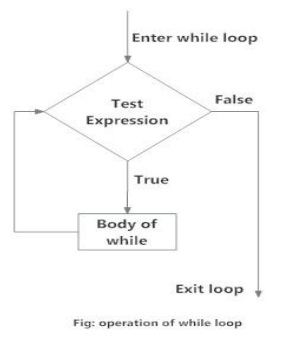Chapter: Problem Solving and Python Programming : Control Flow, Functions
Iteration - Python
Iteration
The while statement
The
keyword while followed by a test expression (which can be any valid
expression), and a colon. Following the header is an indented body. The test
expression is evaluated. If it evaluates to True, then the body of the loop is
executed. After executing the body, the test expression is evaluated again.
While test expression evaluates to True, the body of the loop is executed. When
the test expression evaluates to False, the loop is terminated and execution
continues with the statement following the body.
while
<test_expression>:
<body>

Eg:
def sequence(n):
while n != 1:
print n,
if n%2 == 0: # n is even
n = n/2
else: # n is odd
n = n*3+1
The
condition for this loop is n != 1, so the loop will continue until n is 1,
which makes the condition false.
Each time
through the loop, the program outputs the value of n and then checks whether it
is even or odd. If it is even, n is divided by 2. If it is odd, the value of n
is replaced with n*3+1. For example, if the argument passed to sequence is 3,
the resulting sequence is 3,10, 5, 16, 8, 4, 2, 1.
The for Statement
Python’s
for statement iterates over the items of any sequence (a list or a string), in
the order that they appear in the sequence.
for val in sequence:
Body of for

Eg:
#
Program to find the sum of all
numbers stored in a list
#
List of numbers
numbers = [6, 5, 3, 8, 4, 2, 5, 4, 11]
#
variable to store the sum sum = 0
#
iterate over the list
for val in numbers:
sum = sum+val
Output: The sum is 48
print("The sum is", sum)
The range() function
If you do
need to iterate over a sequence of numbers, the built-in function range() comes
in handy. It generates arithmetic progressions:
Eg:
# Prints
out the numbers 0,1,2,3,4
# for x in
range(5):
print(x)
This
function does not store all the values in memory, it would be inefficient. So
it remembers the start, stop, step size and generates the next number on the
go.
Python break and continue
The break
statement terminates the loop containing it. Control of the program flows to
the statement immediately after the body of the loop.
If break
statement is inside a nested loop (loop inside another loop), break will
terminate the innermost loop.
The
working of break statement in for loop and while loop is shown below.

Eg:
# Prints
out 0,1,2,3,4
count = 0
while
True:
print(count)
count +=
1 if
count
>= 5:
break
The
continue statement is used to skip the rest of the code inside a loop for the
current iteration only. Loop does not terminate but continues on with the next
iteration.
The
working of continue statement in for and while loop is shown below.

Eg:
# Prints
out only odd numbers - 1,3,5,7,9
# for x in
range(10):
Check if
x is even
if x % 2
== 0:
continue
print(x)
Python pass statement
The pass
statement does nothing. It can be used when a statement is required syntactically
but the program requires no action.
Eg:
>>>
while True:
.. pass #
Busy-wait for keyboard interrupt (Ctrl+C)
...
This is
commonly used for creating minimal classes:
>>>class
MyEmptyClass:
... pass
...
Another
place pass can be used is as a place-holder for a function or conditional body
when you are working on new code, allowing you to keep thinking at a more
abstract level. The pass is silently ignored:
>>>def
initlog(*args):
... pass
# Remember to implement this!
Related Topics